Related Research Articles

The classical guitar is a member of the guitar family used in classical music and other styles. An acoustic wooden string instrument with strings made of gut or nylon, it is a precursor of the modern acoustic and electric guitars, both of which use metal strings. Classical guitars derive from the Spanish vihuela and gittern of the fifteenth and sixteenth century. Those instruments evolved into the seventeenth and eighteenth-century baroque guitar—and by the mid-nineteenth century, early forms of the modern classical guitar.

The double bass, also known simply as the bass, is the largest and lowest-pitched bowed string instrument in the modern symphony orchestra. Similar in structure to the cello, it has four, although occasionally five, strings.

The piano is a stringed keyboard instrument in which the strings are struck by wooden hammers that are coated with a softer material. It is played using a keyboard, which is a row of keys that the performer presses down or strikes with the fingers and thumbs of both hands to cause the hammers to strike the strings. It was invented in Italy by Bartolomeo Cristofori around the year 1700.
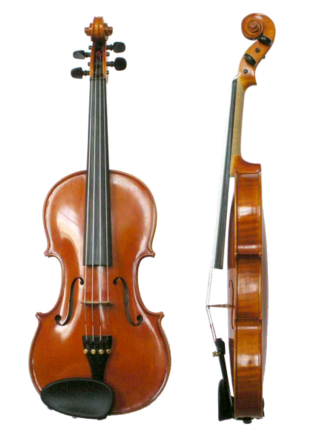
The violin, sometimes known as a fiddle, is a wooden chordophone in the violin family. Most violins have a hollow wooden body. It is the smallest and thus highest-pitched instrument (soprano) in the family in regular use. The violin typically has four strings, usually tuned in perfect fifths with notes G3, D4, A4, E5, and is most commonly played by drawing a bow across its strings. It can also be played by plucking the strings with the fingers (pizzicato) and, in specialized cases, by striking the strings with the wooden side of the bow.

String instruments, stringed instruments, or chordophones are musical instruments that produce sound from vibrating strings when a performer plays or sounds the strings in some manner.

Pizzicato is a playing technique that involves plucking the strings of a string instrument. The exact technique varies somewhat depending on the type of instrument :
The palm mute is a playing technique for guitar and bass guitar, executed by placing the side of the picking hand below the little finger across the strings to be plucked, very close to the bridge, and then plucking the strings while the damping is in effect. This produces a muted sound. The name is a slight misnomer, as the muting is performed by the side of the hand, not the palm.

Slapping and popping are ways to produce percussive sounds on a stringed instrument. It is primarily used on the double bass or bass guitar. Slapping on bass guitar involves using the edge of one's knuckle, where it is particularly bony, to quickly strike the string against the fretboard. On bass guitars, this is commonly done with the thumb, while on double bass, the edge of the hand or index finger may be used. Popping refers to pulling the string away from the fretboard and quickly releasing it so it snaps back against the fretboard. On bass guitar, the two techniques are commonly used together in alternation, though either may be used separately.

Clawhammer, sometimes called down-picking, overhand, or frailing, is a distinctive banjo playing style and a common component of American old-time music.
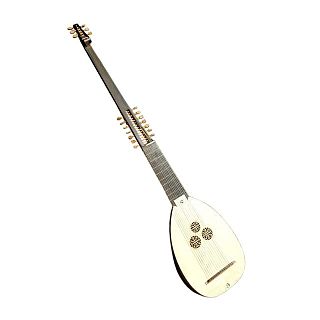
The theorbo is a plucked string instrument of the lute family, with an extended neck and a second pegbox. Like a lute, a theorbo has a curved-back sound box with a wooden top, typically with a sound hole, and a neck extending out from the soundbox. As with the lute, the player plucks or strums the strings with one hand while "fretting" the strings with the other hand; pressing the strings in different places on the neck produces different pitches (notes), thus enabling the performer to play chords, basslines and melodies.
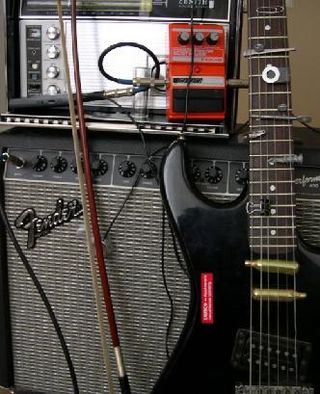
In music, extended technique is unconventional, unorthodox, or non-traditional methods of singing or of playing musical instruments employed to obtain unusual sounds or timbres.

Fingerstyle guitar is the technique of playing the guitar or bass guitar by plucking the strings directly with the fingertips, fingernails, or picks attached to fingers, as opposed to flatpicking. The term "fingerstyle" is something of a misnomer, since it is present in several different genres and styles of music—but mostly, because it involves a completely different technique, not just a "style" of playing, especially for the guitarist's picking/plucking hand. The term is often used synonymously with fingerpicking except in classical guitar circles, although fingerpicking can also refer to a specific tradition of folk, blues and country guitar playing in the US. The terms "fingerstyle" and "fingerpicking" also applied to similar string instruments such as the banjo.
Articulation is a fundamental musical parameter that determines how a single note or other discrete event is sounded. Articulations primarily structure an event's start and end, determining the length of its sound and the shape of its attack and decay. They can also modify an event's timbre, dynamics, and pitch. Musical articulation is analogous to the articulation of speech, and during the Baroque and Classical periods it was taught by comparison to oratory.

Playing the violin entails holding the instrument between the jaw and the collar bone. The strings are sounded either by drawing the bow across them (arco), or by plucking them (pizzicato). The left hand regulates the sounding length of the strings by stopping them against the fingerboard with the fingers, producing different pitches.
Finger vibrato is vibrato produced on a string instrument by cyclic hand movements. Despite the name, normally the entire hand moves, and sometimes the entire upper arm. It can also refer to vibrato on some woodwind instruments, achieved by lowering one or more fingers over one of the uncovered holes in a trill-like manner. This flattens the note periodically creating the vibrato.
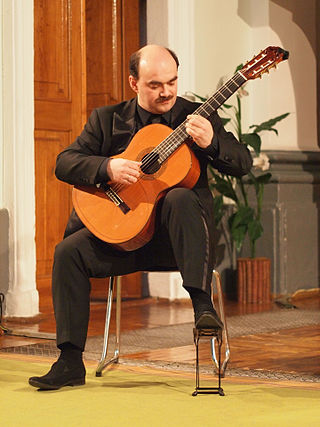
In classical guitar, the right hand is developed in such a way that it can sustain two, three, and four voice harmonies while also paying special attention to tone production. The index (i), middle (m), and ring (a) fingers are generally used to play the melody, while the thumb (p) accompanies in the bass register adding harmony and produces a comparable texture and effect to that of the piano. The classical guitar is a solo polyphonic instrument, and it is difficult to master.

A flamenco guitar is a guitar similar to a classical guitar but with thinner tops and less internal bracing. It usually has nylon strings, like the classical guitar, but it generally possesses a livelier, more gritty sound compared to the classical guitar. It is used in toque, the guitar-playing part of the art of flamenco.

Playing a string harmonic is a string instrument technique that uses the nodes of natural harmonics of a musical string to isolate overtones. Playing string harmonics produces high pitched tones, often compared in timbre to a whistle or flute. Overtones can be isolated "by lightly touching the string with the finger instead of pressing it down" against the fingerboard. For some instruments this is a fundamental technique, such as the Chinese guqin, where it is known as fan yin, and the Vietnamese đàn bầu.
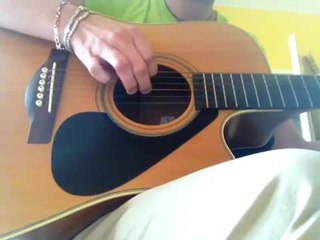
Guitar picking is a group of hand and finger techniques a guitarist uses to set guitar strings in motion to produce audible notes. These techniques involve plucking, strumming, brushing, etc. Picking can be done with:

Playing the cello is done while seated with the instrument supported on the floor. The fingertips of the left hand stop the strings on the fingerboard to determine the pitch of the fingered note. The right hand plucks or bows the strings to sound the notes.
References
- ↑ Music, Alfred. Guitar Technique Encyclopedia. p. 56. ISBN 9781457415098 . Retrieved 15 July 2014.
- ↑ Composer's Desk Reference for the Classic Guitar. 7 October 2010. p. 56. ISBN 9781609744724 . Retrieved 15 July 2014.
- ↑ Annala, Hannu (7 October 2010). Handbook of Guitar and Lute Composers. p. 77. ISBN 9781609743536 . Retrieved 15 July 2014.